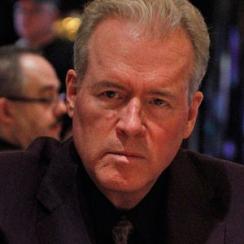
| |
| Robert Mercer, co-CEO of Renaissance Technologies (Photo Courtesy World Poker Tour). |
So it is all the more remarkable that in 2016, Renaissance Technologies enjoyed a 42 percent increase in assets, to $42 billion. Part of this big bump is the result of strong performance at its three funds that are open to outside investment.
However, the East Setauket, New York–based quantitative giant, founded by math whiz James Simons, also enjoyed about $7 billion in inflows last year. This includes money from both internal and external investors in its existing funds and its newest offering, the Renaissance Institutional Diversified Global Equities Fund (RIDGE), launched in April 2016.
This surge is much greater than what virtually any other hedge fund firm experienced last year. However, this is not too surprising for Renaissance — arguably the most successful hedge fund firm ever — given the recent performance of its funds that are still available to outside investors. For example, the firm’s Renaissance Institutional Equities Fund (RIEF) gained 20.6 percent last year and has posted consistent gains ranging between roughly 14 percent and 20.6 percent in each of the past four years.
RIEF deploys a net-long investment strategy that trades both U.S. and non-U.S. equity securities listed on U.S. exchanges. It was created to generate gross annual returns of 400 to 600 basis points, or 4 to 6 percentage points, above the Standard & Poor’s 500 stock index over rolling three- to five-year periods using average leverage of about 2.5-to-1.
Last year RIEF beat the benchmark by 8.6 percentage points and by 15.1 percentage points the previous year. In 2014 its net performance roughly matched the S&P 500, while in 2013 its net gain came in at a little more than half the astounding 32.4 percent surge in the benchmark. In the first quarter of this year, RIEF gained 3.25 percent, less than the 6.1 percent gain posted by the S&P 500.
The Renaissance Institutional Diversified Alpha Fund (RIDA), launched in March 2012, trades global futures and forwards, as well as U.S. and non-U.S. equities listed on U.S. exchanges. It has posted double-digit gains in each of the past three years, including 10.6 percent in 2016. The fund rose 4.2 percent in the first quarter of this year.
Meanwhile, RIDGE has climbed about 6 percent in the 12 months since its April 2016 launch, including 4.3 percent in the first quarter of this year.
It is a market-neutral fund designed to have a low correlation to the global equities market. It had planned to trade more than 4,000 equity securities listed on U.S. and non-U.S. exchanges.
As is usually the case with Renaissance and other quant firms, it is not known what trades or strategies drove performance.
Simons no longer runs Renaissance on a day-to-day basis. He serves as chairman and spends most of his time on philanthropy and his foundation. The firm is headed by co-presidents Robert Mercer, who famously helped to bankroll Ted Cruz’s failed bid to be president and then Donald Trump’s campaign through political action committees (PACs), and Peter Brown, who prefers a much lower profile.







